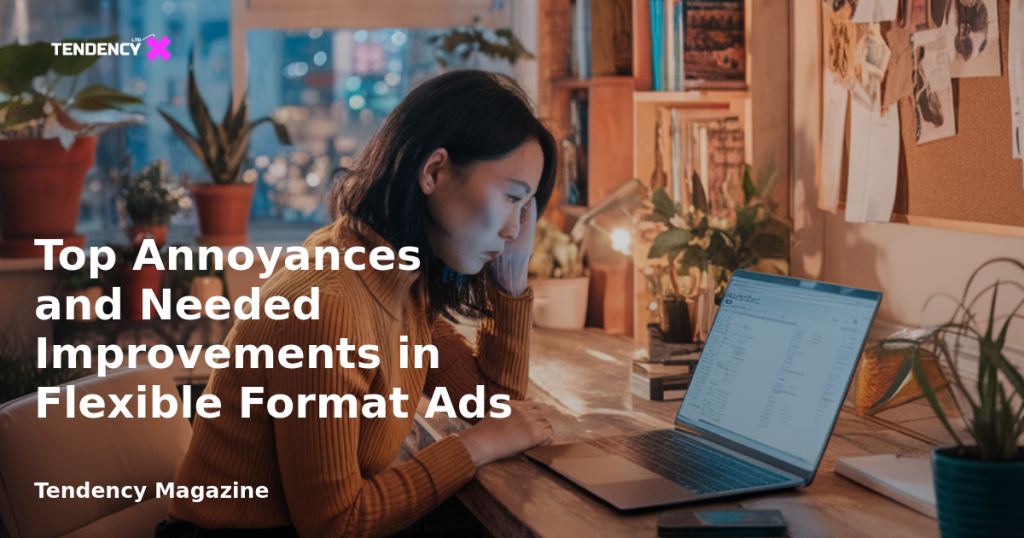Top Annoyances and Needed Improvements in Flexible Format Ads

Introduction
In the ever-evolving landscape of digital advertising, Flexible Format Ads have emerged as a promising tool for advertisers seeking versatility and reach. However, while this format offers the ability to submit multiple images or videos for a single ad, it also presents certain challenges that can frustrate even the most seasoned marketers. This article delves into the top annoyances associated with Flexible Format Ads and explores potential improvements that could enhance their effectiveness.
Table of Contents:
- Understanding Flexible Format Ads
- Annoyance #1: Lack of Customization by Placement
- Annoyance #2: Inability to Set Video Thumbnails
- Annoyance #3: Limited Control Over Advantage+ Creative Features
- The Need for Improvement in Flexible Format Ads
- Conclusion
Understanding Flexible Format Ads
Flexible Format Ads are designed to provide advertisers with a dynamic and adaptable approach to digital marketing. By allowing up to 10 images or videos within a single ad, this format aims to capture diverse audience segments with varying preferences. However, despite its potential, there are notable limitations that can hinder its full utility.
Annoyance #1: Lack of Customization by Placement
One of the primary frustrations with Flexible Format Ads is the inability to customize content based on placement. In traditional advertising, ensuring that an ad looks appealing across different platforms and placements is crucial. With Flexible Format, advertisers are required to provide media that can be cropped to fit standard aspect ratios, such as 9×16 or 4×5, without the ability to tailor content specifically for each placement. This lack of control can lead to suboptimal ad appearances, potentially diminishing their impact.
Annoyance #2: Inability to Set Video Thumbnails
Another significant issue is the automatic selection of video thumbnails. Thumbnails are a critical component of video ads, as they serve as the first impression and can significantly influence viewer engagement. In the Flexible Format, advertisers are not given the option to choose their own thumbnails, resulting in potentially irrelevant or unattractive selections by the platform. This automatic process often fails to capture the essence of the video, leading to a disconnect with the target audience.
Annoyance #3: Limited Control Over Advantage+ Creative Features
Flexible Format Ads also limit advertisers’ ability to selectively enable or disable Advantage+ Creative Features. While these enhancements can be beneficial, not all features are suitable for every ad campaign. The current all-or-nothing approach forces advertisers to either accept all enhancements or none, removing the flexibility to tailor features to specific campaign goals. This blanket application can lead to unnecessary or even detrimental effects on ad performance.
The Need for Improvement in Flexible Format Ads
Despite these challenges, Flexible Format Ads hold immense potential for advertisers seeking to maximize their reach and engagement. To unlock this potential, certain improvements are necessary:
1. **Enhanced Customization Options:** Providing advertisers with the ability to customize content based on placement would empower them to create more visually appealing and effective ads tailored to each platform’s unique characteristics.
2. **Thumbnail Selection Control:** Allowing advertisers to manually select video thumbnails would ensure that the most relevant and engaging images are used, enhancing viewer attraction and engagement.
3. **Selective Advantage+ Feature Application:** Introducing the option to individually enable or disable Advantage+ Creative Features would give advertisers greater control over their campaigns, allowing them to optimize performance based on specific objectives.
Conclusion
Flexible Format Ads represent a significant advancement in digital advertising, offering versatility and reach that can drive successful campaigns. However, to fully harness their potential, it is crucial to address the current limitations. By implementing improvements such as enhanced customization, thumbnail selection control, and selective feature application, advertisers can better tailor their campaigns to meet their unique goals and audience needs. As the digital advertising landscape continues to evolve, adapting and refining these tools will be essential for achieving optimal results.
2025 Tendency LTD. All rights reserved.

